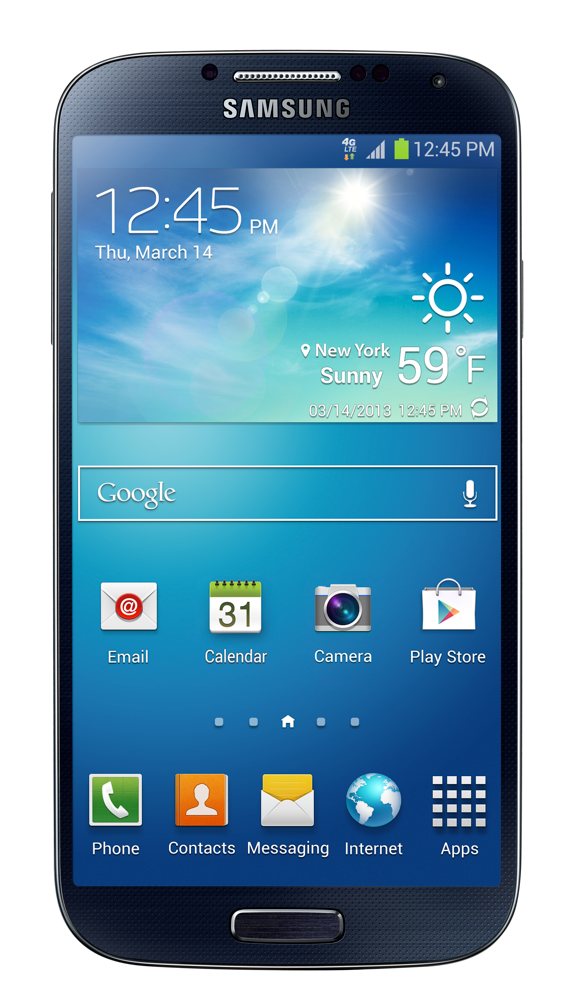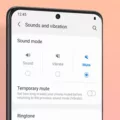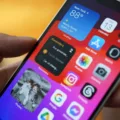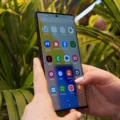The Samsung Galaxy S4 is a popular smartphone that offers a range of features and functionality. However, like any electronic device, it may encounter issues from time to time. One common problem that Galaxy S4 users may face is the “No Service” error, where the phone fails to connect to a network. In this article, we will explore various troubleshooting steps to help you resolve this issue and restore service to your device.
1. Check SIM Placement:
Firstly, ensure that the SIM card is correctly inserted into the phone. Remove the SIM card tray, clean the SIM golden points if necessary, and reinsert it properly. Sometimes, a loose or improperly placed SIM card can lead to connectivity issues.
2. Restart Your Phone:
A simple restart can often resolve temporary glitches. Turn off your Galaxy S4, remove the battery for a few seconds (if applicable), reinsert it, and power on the device. This step can help refresh the network connection and resolve minor software hiccups.
3. Verify SIM Activation:
Ensure that your SIM card is active and in good standing with your mobile service provider. Contact your provider if you suspect any issues with your account or SIM card activation.
4. Check Network Mode:
Navigate to Settings > Connections > Mobile Networks > Network Mode, and select “Auto” if it isn’t already enabled. This option allows your phone to automatically search for and connect to the strongest available network signal.
5. Reset APN Settings:
In some cases, incorrect Access Point Names (APN) settings can cause network connectivity problems. Go to Settings > Connections > Mobile Networks > Access Point Names and tap on the three dots in the top-right corner. Select “Reset to default” and confirm the reset. This action will reconfigure the APN settings, potentially resolving the issue.
6. Try Another Phone:
If possible, insert your SIM card into another compatible phone to check if the issue persists. If the SIM card works fine in another device, the problem may lie with your Galaxy S4. Conversely, if the SIM card fails to connect in a different phone, contact your service provider for further assistance.
The “No Service” issue on a Samsung Galaxy S4 can be frustrating, but there are several troubleshooting steps you can try to resolve it. By checking SIM placement, restarting the phone, verifying SIM activation, adjusting network settings, and resetting APN configurations, you can increase the chances of restoring a stable network connection. If all else fails, contacting your service provider or seeking professional assistance may be necessary.

How Do You Fix Your Samsung Phone When It Says No Signal?
To fix a Samsung phone that says “No Signal,” follow these steps:
1. Go to the Settings menu on your phone.
2. Select “Connections” from the menu options.
3. Tap on “Mobile Networks” to access the network settings.
4. Look for the option called “Network Operators” and toggle it off.
5. After toggling it off, select the option for manually selecting the network.
6. A list of available network providers will appear. Choose your provider from the list.
7. Once you have selected your provider, wait for the phone to connect to the network.
8. Check if the “No Signal” issue is resolved by looking at the signal bars on your phone.
If these steps do not fix the issue, you can try the following additional troubleshooting options:
– Restart your phone: Sometimes, a simple restart can solve network-related problems.
– Remove and reinsert the SIM card: Turn off your phone, remove the SIM card, wait for a few seconds, and then reinsert it. Turn on the phone and check for the signal.
– Check your SIM card: Ensure that your SIM card is properly inserted and not damaged. If it is damaged, contact your service provider for a replacement.
– Update your phone’s software: Outdated software can sometimes cause signal issues. Go to the Settings menu, select “Software Update,” and check for any available updates.
If none of these steps resolve the “No Signal” problem on your Samsung phone, it is recommended to contact your service provider or visit a Samsung service center for further assistance.
Why is Your Samsung Phone Not Connecting to Mobile Network?
There could be several reasons why your Samsung phone is not connecting to the mobile network. Here are some possible explanations:
1. Network Coverage Issues:
– Check if you are in an area with sufficient network coverage. Sometimes, you may be in a location where the signal is weak or unavailable.
– Verify if other devices are able to connect to the network. If they can, then the issue may be specific to your phone.
2. Incorrect APN Settings:
– Access Point Name (APN) settings are necessary for your phone to connect to the mobile network.
– Ensure that your APN settings are correct. You can find these settings in your phone’s settings menu, under Connections > Mobile networks > Access Point Names.
– If the settings are incorrect or have been modified, reset them to default by tapping on the three dots at the top-right corner and selecting “Reset to default” or “Reset.”
3. Software or Firmware Issues:
– Check if your phone’s software or firmware is up to date. Outdated software can sometimes cause connectivity problems.
– Go to Settings > Software update (or System update) and check for any available updates. If updates are available, download and install them.
4. SIM Card Issues:
– Ensure that your SIM card is properly inserted in your phone. Try removing it and reinserting it to make sure it is securely in place.
– Test your SIM card in another phone to determine if the issue is with the SIM card itself.
5. Airplane Mode or Mobile Data Disabled:
– Make sure that Airplane Mode is turned off on your phone. When Airplane Mode is enabled, all wireless connections, including mobile data, are disabled.
– Additionally, check if your mobile data is enabled. Go to Settings > Connections > Data usage > Mobile data and ensure it is turned on.
6. Hardware Problems:
– In rare cases, hardware issues can cause connectivity problems. If none of the above solutions work, you may need to contact the manufacturer or a technician to diagnose and fix any potential hardware issues.
Remember to restart your phone after making any changes or adjustments to settings. If the problem persists, it is advisable to contact your network provider or Samsung support for further assistance.
What to Do If SIM Card Shows No Service?
If your SIM card is showing no service, there are several steps you can take to troubleshoot and resolve the issue:
1. Check if the SIM is placed correctly: Make sure that the SIM card is properly inserted into the SIM tray of your phone or tablet. Ensure that it is secure and properly aligned.
2. Restart your phone or tablet: Sometimes, a simple restart can resolve connectivity issues. Turn off your device, remove the SIM card, wait for a few seconds, reinsert the SIM card, and then turn on your device again.
3. Check if the SIM golden points are clean: The golden points on the SIM card should be clean and free from any dirt or debris. Use a soft cloth or an eraser to gently clean the golden points. Avoid using any liquid or abrasive materials that may damage the SIM card.
4. Check if the SIM golden points have any scratches: Inspect the golden points on the SIM card for any visible scratches or damage. If there are significant scratches, it may affect the connectivity. In such cases, you may need to replace the SIM card.
5. Check if the SIM is active: Verify with your mobile service provider that the SIM card is active and not deactivated or suspended. They can also check if there are any network issues in your area that may be causing the no service error.
6. Check if the SIM tray is properly inserted: Ensure that the SIM tray is securely closed and properly inserted into your device. Sometimes, a loose or misaligned SIM tray can cause connectivity issues.
7. Change the network mode to auto: Go to the network settings on your device and switch the network mode to “auto” or “automatic.” This will allow your device to automatically search for and connect to the available network.
8. Try the SIM card on another phone: If possible, insert the SIM card into another compatible phone to check if the issue is with the SIM card or the device itself. If the SIM card works fine on another phone, then the problem may be with your device.
If none of these steps resolve the issue and your SIM card continues to show no service, it is recommended to contact your mobile service provider for further assistance. They may be able to provide specific troubleshooting steps or suggest alternative solutions.
Why is Your Samsung S4 Not Working?
There could be several reasons why your Samsung S4 is not working. Here are some possible causes and solutions:
1. Battery Issues:
– The battery might be drained or faulty. Try charging the phone for at least 30 minutes and check if it powers on.
– If the battery is old or damaged, consider replacing it with a new one.
– Ensure that the battery is properly inserted into the phone and the contacts are clean.
2. Software Problems:
– The operating system may have crashed or encountered an error. Try performing a soft reset by holding down the power button for about 10 seconds until the phone restarts.
– If the soft reset doesn’t work, try a hard reset. This will erase all data on your phone, so make sure to backup important files first. To perform a hard reset, turn off the phone, then simultaneously press and hold the volume up, home, and power buttons until the Samsung logo appears.
– If the phone still doesn’t work after a hard reset, you may need to consider reinstalling the operating system or seeking professional technical assistance.
3. Hardware Malfunction:
– The power button might be stuck or not functioning properly. Try cleaning the button with electrical cleaner or compressed air.
– If cleaning doesn’t help, the power button may need to be replaced. This requires technical expertise, so it’s recommended to take the phone to a certified repair center.
4. Overheating:
– If your phone gets excessively hot, it may shut down or refuse to turn on. Allow the phone to cool down for a while, then try turning it on again.
– Avoid using the phone while it’s charging or running demanding applications for extended periods, as this can cause overheating.
5. Water Damage:
– If your phone has been exposed to water or other liquids, it could be causing the malfunction. Immediately turn off the phone and remove the battery, if possible. Then, dry it thoroughly and place it in a bag of uncooked rice for at least 24 hours to absorb any moisture.
– After the drying process, reinsert the battery and try turning on the phone. If it still doesn’t work, you may need to bring it to a professional for repair.
It’s important to note that these are just potential solutions, and the exact cause of the problem may vary. If none of the above steps resolve the issue, it’s advisable to contact Samsung support or consult a professional technician for further assistance.
Conclusion
If you are experiencing “No Service” or signal issues on your Samsung Galaxy S4, there are several steps you can take to try and resolve the problem.
First, make sure that your SIM card is placed correctly in the device. Sometimes, a loose or improperly inserted SIM card can cause connectivity issues.
Next, try restarting your phone or tablet. This simple step can often fix minor software glitches that may be causing the no service problem.
Check the golden points on your SIM card to ensure they are clean and free from any dirt or debris. Sometimes, a dirty SIM card can prevent proper signal reception.
Inspect the golden points on your SIM card for any scratches. If there are scratches present, it may be necessary to replace the SIM card as this can also cause connectivity issues.
Confirm that your SIM card is active and properly activated by your service provider. If your SIM card is inactive, it will not be able to connect to the network.
Ensure that the SIM tray is properly inserted in the device. A loose or misaligned SIM tray can also result in no service problems.
Try changing the network mode to auto in the settings of your device. This will allow your device to automatically select the best available network for signal reception.
If possible, try inserting your SIM card into another phone to see if the no service issue persists. If it does, then the problem may lie with the SIM card itself and you may need to contact your service provider for further assistance.
If none of these steps resolve the no service problem, you may want to consider performing a hard reset on your device. This will restore your device to its factory settings and can often fix more complex software issues. However, be aware that a hard reset will erase all data on your device, so be sure to back up any important information beforehand.
Troubleshooting a no service issue on your Samsung Galaxy S4 can be a process of elimination. By following these steps and checking each potential cause, you can hopefully resolve the problem and regain proper signal reception on your device.













